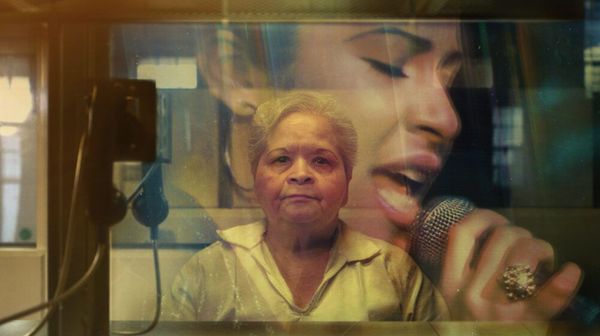
When the 43-year-old Italian architect Valentina Moretti returned to Italy from living in Switzerland and the US to help her father, Vittorio, in his construction company, she seized the chance to work on the prototype of her vision for the future of prefabricated homes.
“After many years working with famous architects, I understood that I really wanted to bring architecture into normal life,” explains Moretti. “So, when I returned I started thinking about a new business model connecting an architecture office to a construction firm as one company, to build prefabricated houses and look after everything from start to finish.”
With Vittorio up for the challenge, the pair set about plotting the project on the family hill in Franciacorta in Brescia, Lombardy. “My father bought this land in the 80s and started his winery business, and later built our hotel; now the whole family lives here,” she says.
They started work in August 2018, and the house was ready to move into that December. “We built a 1,000 sq m home in just a few months because it’s prefab!” says Moretti. “In Italy, 13 December is Santa Lucia – which is similar to Father Christmas coming – so I really wanted my kids to be here for that night, and we were – all sitting around the tree.”
Built from concrete blocks in a steel structure with a wooden roof, the finished house is testament to the exquisite engineering skills Moretti picked up at the legendary Accademia di Architettura di Mendrisio in Switzerland where she was taught “a functional way to approach a project, not in a decorative way but where the structure is the decoration”. She studied under Mario Botta, Peter Zumthor and Valerio Olgiati.
“These were my masters and they taught me a functional way to approach a project, not in a decorative way but where the structure is the decoration,” she says.
Once inside, Moretti and her husband, Francesco, set about placing their objects around the large open-plan living spaces and small box-like bedrooms. These are connected by wall-to-wall windows so that the surrounding forest becomes a fourth wall. “The idea for my home was to live in a forest,” she says, her background to our Zoom call indeed looking like a lush canopy of oak and nut trees. “During the construction it was very important to my father to maintain [all the trees and vegetation] that were already here.”
With the structure doing most of the talking, Moretti has kept the interior simple. “The building for me is very connected to Mies van der Rohe,” she explains, referring to the late Bauhaus director famed for his less-is-more approach.
In the kitchen, a huge stainless steel island sits on top of black tiles that run throughout the ground floor, linking each room in the space. It’s here that the couple cook hearty Italian meals and Moretti’s favourite Indian dishes with their sons Giovanni, Antonio and Luigi. A table Moretti inherited from her parents acts as a segue into the living room. “I wouldn’t necessarily have chosen to have that here, but I love it because it has a lot of history,” she says.
The huge sink-into sofas by Edra were the only thing on the couple’s wedding gift list. “I really love those sofas. I put them in every project I do for my clients because they are the most comfortable you can find,” she says. Above one is a hanging mobile by a team in Barcelona with the rights to reproduce Alexander Calder’s iconic original creation. On the walls, artwork by local Brescia artist Eugiene Carmi adds colour to the exposed concrete walls.
Joining the house’s three floors is Moretti’s masterpiece, a suspended steel staircase hinged off a 14m concrete slab. Normally used in construction to stabilise a structure against seismic movement and covered up, here it has been left exposed as a tactile and central feature.
Upstairs, the small bedrooms feature branch-like beds designed by Moretti for the family hotel down the hill, L’Albereta. The walls of the children’s rooms are hand-painted and look out on to the rooftop garden. “I wanted an explosion of flower confetti floating all around my kids,” she says. It is a home designed to be flexible. “The building stays the same, but every six months I completely change the interior because I’m scared of getting bored,” she says.
“I put in a second entrance because I’ve already thought of long-term life here,” she says. “I designed this house to be easily separated into upstairs and downstairs so when we’re old we can live on one floor and rent out the other or maybe give the kids more privacy when they get older.”
For now, though, Moretti and her family are happily ensconced in their leafy haven on the hill that became the first of 50 the father-daughter duo have completed.
Naturally, clients want to see what they’re buying into, and some end up sitting around her kitchen table in Franciacorta. “In Italy, prefab is not very usual, and so often they come here and say, ‘Oh my God, I thought prefab was something you can move.’ No, I say, prefab is for ever.”







